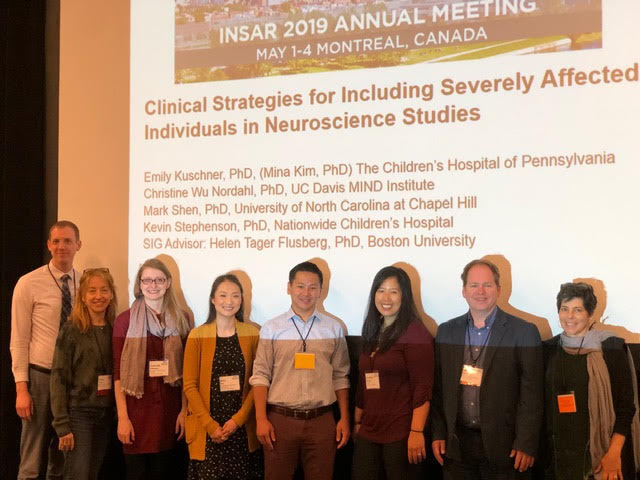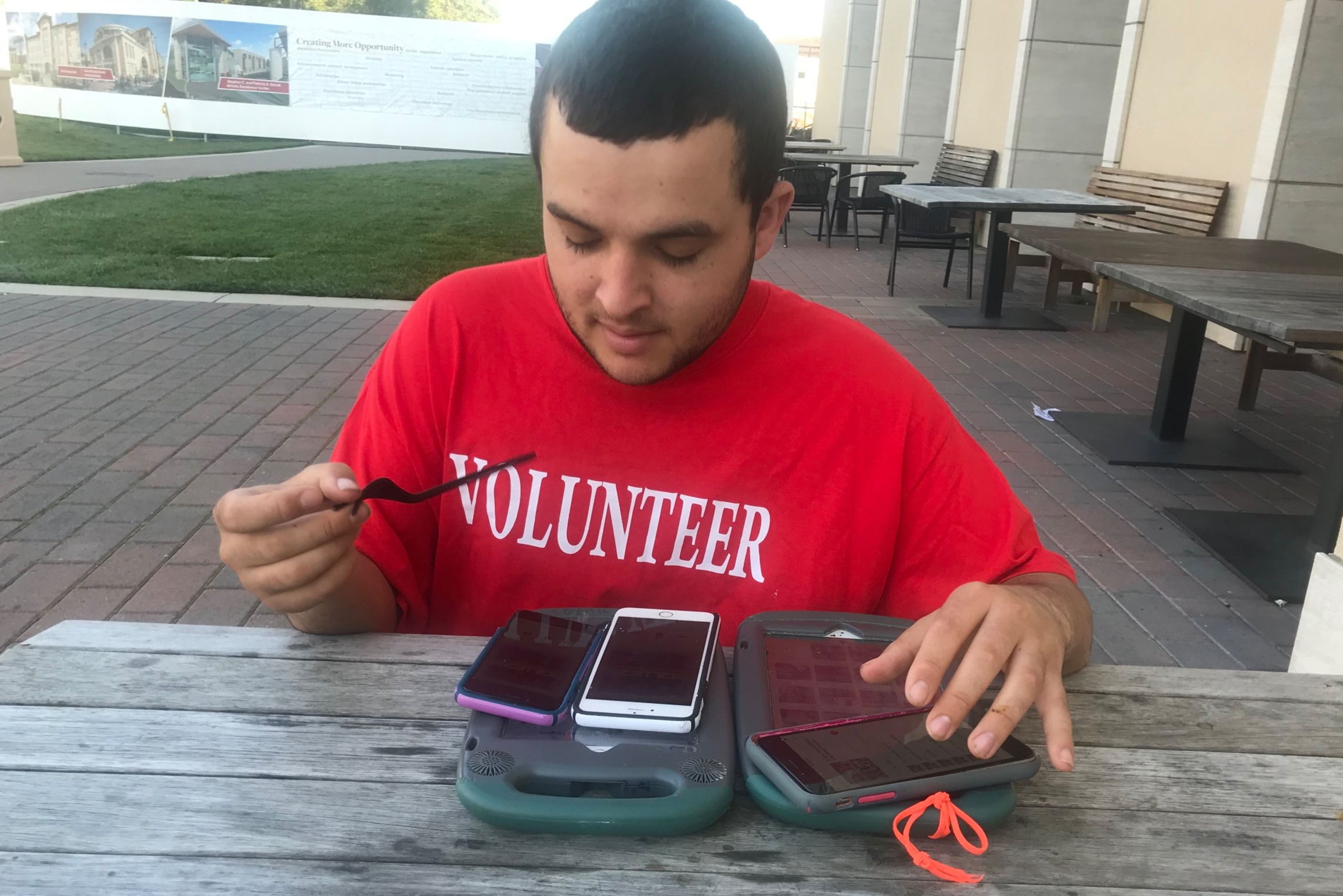By Neil Greenspan, MD, PhD
In 1970, the Autism Society of America created the first Autism Awareness Month. So, as I write in April 2019, we have had five decades of efforts to increase sensitivity to individuals with this condition — which is actually a constellation of conditions — affecting neural development, communication, social interaction, and behavior. While these annual commemorations may have increased awareness of autism, the extent to which they have enhanced insight into and improved the lives of people with autism is unclear.
Awareness campaigns may even backfire by creating false impressions. One limitation of disability-specific campaigns such as Autism Awareness Month is that they typically promote experiences of individuals with diseases or disabilities that conform to a preferred pattern. For the individual at the center of attention for one of these human-interest stories, obstacles are faced, struggles ensue, and there is an emotionally satisfying success in the end. Iterations of this narrative arc in relation to autism have undoubtedly engaged some non-disabled people who might otherwise not have paid attention, but they have also tended to obscure many dire realities as well.
Too many media outlets prefer to present only the stories, even if unrepresentative, that have a relatively happy ending and will be perceived as uplifting by the audience. Meanwhile, the bottom line for our population is the inadequacy and sometimes even cruelty of systems and services nominally in place to assist those with autism, especially adults. True autism awareness requires clarity about areas where progress is desperately needed. Here are some of them.
Mental and Behavioral Health Care: The first arena of tremendous need is basic behavioral and mental health treatment. In my experience, most physicians specializing in the treatment of autism focus on children and possibly adolescents and do not treat adults. Meanwhile, psychiatrists and perhaps some neurologists who do treat adults with autism tend to focus too narrowly on prescribing medications. Furthermore, there are currently zero drugs that are FDA-approved specifically for the core clinical manifestations of autism. The FDA has approved two drugs for aggression in the context of autism (the antipsychotics risperidone [Risperdal] and aripiprazole [Abilify]). However, they do not necessarily address the defining symptoms associated with autism, or, in some cases, even the symptoms they are supposed to treat.
The drugs that are employed typically require a laborious and largely empirical process (i.e. trial and error, with emphasis on the error) that can be excruciatingly difficult for the patient and the family as increasing doses are tried until a positive effect can be discerned, preferably in the absence of intolerable side effects. Knowing what effects, either good or bad, are attributable to the new medication is often uncertain and can create additional burdensome appointments with yet more doctors, not to mention stress. Even so, many of these drugs are only modestly effective or are ineffective while the side effects may be barely tolerated or intolerable. Some of these side effects, such as weight gain, dizziness, or heat insensitivity can be quite serious in the full context of family life even if the prescribing physician regards them as minor. Consequently, the current standard of care for adults with autism is embarrassingly inadequate for many patients.
So have decades of awareness resulted in significantly improved interventions for adults with autism? It seems the answer is no in spite of the sometimes extensive efforts of parents, or other caregivers, to find the necessary care.
General Medical Care: A second problem is medical services for the endless variety of other ailments experienced by many adults with autism. Some adults with autism, even if highly verbal, may not be able to describe their symptoms in as detailed a manner as their doctors would prefer, resulting in a lower quality of care than might otherwise be the case. In the current time-pressured medical environment, the tendency for some physicians to become impatient with those affected by autism, who may require more time and effort than other patients, can also undermine the quality of care. The establishment of a specialized general medical service for adult patients with autism at the Wexner Medical Center affiliated with Ohio State University is a bright spot but also reflects my strong impression that few family physicians or internists elsewhere are effective in interacting with and treating members of this population.
A further complication is that individuals with autism often suffer from multiple other complaints affecting the central nervous system or other bodily systems. These other conditions can include, but are not limited to, anxiety, obsessive compulsive disorder, attention deficit hyperactivity disorder (ADHD), epilepsy, gastrointestinal problems, and difficulty sleeping. Treatment for these other conditions or symptoms will frequently require appointments with other specialists. A lack of coordinated care, which is more often than not the case, adds to the burden of parents or other caregivers.
Another obstacle to appropriate medical care is that when autistic adults live apart from family members, home care providers may be reluctant to take clients to doctor visits for a variety of reasons: a tendency to dismiss the concerns of people with disabilities, a preference for minimizing effort, constraints imposed by having to deal with the needs of multiple clients in group homes, and minimal medical knowledge. A related factor contributing to less than optimal well-being in such residential settings is that the diets of individuals with disabilities may contain too many calories and too few nutrients. Of comparable importance, their levels of physical activity may be less than is necessary for optimal or even decent health.
With some exceptions, it is hard to see how decades of autism awareness have resulted in improved access to general medical care for adults with autism even when caregivers devote hours to finding the most appropriate physicians.
Community Services: Adults with autism typically lack the cognitive and adaptive skills to function independently, and require disability programs to provide care, paid or volunteer work, social and recreational opportunities, and community engagement. However, the supply of these programs is not keeping pace with increasing demand. Providers are not paid adequately and many are shutting their doors, while waitlists for these Medicaid-funded programs grow longer in many states. The autism housing crisis is acute across the country, and will only be exacerbated as the parents grow older and too infirm to care for their disabled grown children.
In many cases, the extent of individual attention required necessitates monthly expenses that are astonishingly high and therefore completely out of reach for the vast majority of families. For example, earlier this year we spoke to an individual with multiple relevant credentials who provides customized in-home services — and charges $250 per hour for her services. More recently, we contacted a residential therapeutic facility in another state to assess its suitability for a family member and learned that the services offered are about $25,000 per month.
Furthermore, in spite of stereotypes, many individuals with autism want friends and seek social acceptance and engagement. However, limitations in social skills may cause them to be anxious in social settings and may create situations that make nondisabled people less likely to become friends. One result is that many adults with autism are extremely lonely. I see an epidemic of isolation among young autistic adults, who need to find their micro-communities within their own communities. But such services are in short supply.
Again, it is difficult to see how decades of autism awareness has produced an adequate community care system for adults disabled by autism. No matter how hard parents search for an appropriate residential arrangement for an affected family member, they cannot find it if it does not exist.
Employment: For those with sufficient cognitive skills, finding and maintaining employment is challenging. They can run afoul of fellow employees and supervisors because they react too strongly to impolite comments or critical feedback from other employees or from customers or clients. Affected individuals may also fail to abide by what are viewed (at a given workplace) as customary patterns of behavior. One consequence is that adults with autism, even those who are deemed “high functioning” continue to have relatively low employment rates.
Summing up, in spite of decades of awareness campaigns, necessary services are profoundly inadequate, and I do not see on the horizon solutions in many of areas, be it mental health, general medical care, community services and housing, or employment. Sure, iPads, behavioral therapies, and palliatives described in some books — such as Disney movies, Siri, medical cannabis and road trips — may be helpful at times, but current, stable and long-term options are unsatisfactory for the overwhelming majority of people. Consequently, the efforts of parents, other family members, or unrelated caregivers supporting adults with autism are analogous to Sisyphus* of the ancient Greek myth – metaphorically rolling a boulder up a hill only to have it roll down again endlessly. Awareness is clearly not enough. We need well-conceived action now.
Neil Greenspan, MD, PhD is an immunologist and clinical pathologist in the Department of Pathology at the Case Western Reserve University School of Medicine and University Hospitals Cleveland Medical Center, Cleveland, Ohio. The opinions expressed are solely his own and should not be interpreted as representing the official views of the institutions with which he is affiliated.
* In Greek mythology, Sisyphus, because of various tricks he had played on lesser gods, was punished for eternity by Zeus to roll a boulder up a hill only to have it roll back down, in an endless cycle.
























